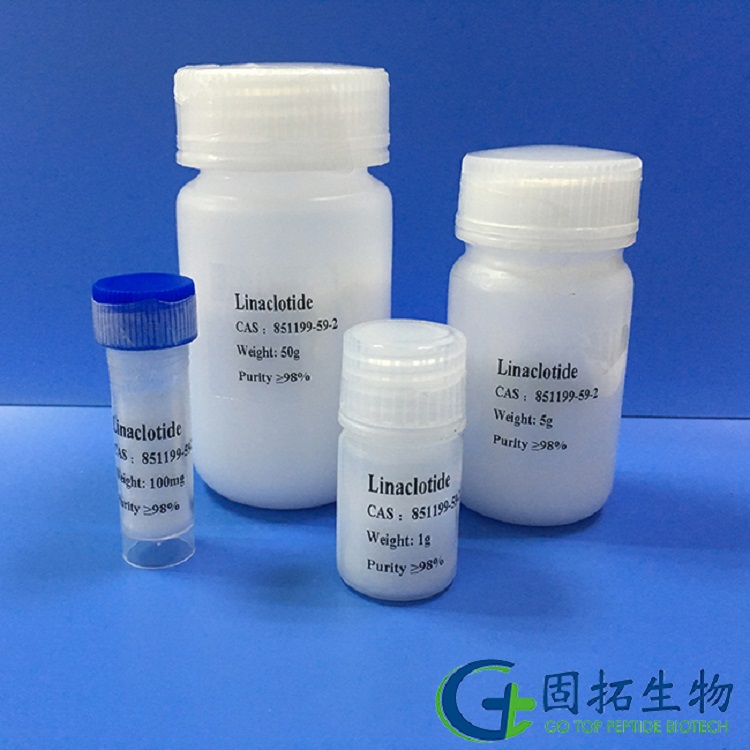September 23, 2020
Tag:
In this paper, we will summarize the latest development of serotonin mediators, anti-inflammatory drugs, junctional protein regulators, analgesics, secretagogues and the drugs that affect microorganisms.
Selective 5-HT receptor antagonist
1、 Alosetron, ramosetron
Selective 5-HT receptor antagonists, such as alosetron and ramosetron, have been recognized in the treatment of adult IBS. However, due to concerns about treatment-related ischemic colitis, there are few clinical trials of these antagonists in children.
2、 Ondansetron
Ondansetron, a serotonin 3 receptor antagonist, similar to alosetron and ramosetron, reduces stool frequency and suppresses sensory signals that cause abdominal pain and discomfort in diarrhea predominant IBS (IBS-D). According to an adult IBS-D trial, ondansetron can also improve fecal consistency. Because ondansetron can be safely used in children with nausea and vomiting, and widely used in children, clinical trials can further evaluate its efficacy in children with IBS.
Anti inflammatory drugs and connexin modulators
1、 Anti inflammatory
Mesalazine is a widely used anti-inflammatory drug in children with inflammatory bowel disease (IBD). Mesalazine is no better than placebo in the treatment of adult IBS, which is a large multicenter study. However, exploratory analysis showed that the patients in the subgroup continued to be effective with overall improvement of symptoms (P = 0.032). There is no clinical trial of mesalazine in the treatment of IBS in children, which needs further study.
2、 Connexin regulator
There are new theories that inflammatory reaction and abnormal tight junction protein can promote the occurrence of IBS. Serum bovine immunoglobulin (SBI) can regulate connexin. Two studies on the utility of SBI in IBS-D adolescents have yielded conflicting results. One experiment showed that the drug could reduce abdominal pain and improve fecal viscosity at the end of the experiment, but another experiment showed that SBI could only improve the quality of life, not reduce the number of stools. Therefore, it is necessary to do more research on the role of SBI and its role in the treatment of ibs-d.
3、 Pain relief
The opioid effect of IBS-D is a hot topic recently. In adults, two phase III trials have shown the safety and efficacy of eluxadoline for adult IBS-D, i.e., improving fecal viscosity, relieving abdominal pain, abdominal distension, rapid defecation and fecal incontinence. However, eluxadoline can cause sphincter spasm of Oddi and pancreatitis in previous cholecystectomy patients, so its application is limited.
The second phase of double-blind RCT is evaluating the effect of eluxadoline (a mixed opioid receptor agonist and antagonist, approved by FDA for IBS-D in 2015) on adolescent ibs-d.
Secretagogue
For constipation irritable bowel syndrome (IBS-C), secretion enhancers include chloride channel activators and guanylate cyclase agonists, such as linaclotide and plecanatide. The effect of ropiprostone on children with functional constipation is not obvious.
1、 Liralotide and procanatide
Liralotide and pucanatide are beneficial for adult IBS-C patients, and a multicenter study of liralotide in children with IBS-C is underway. This double-blind RCT will evaluate the efficacy of different doses of liralotide (18 μ g, 36 μ g, 72 μ g, 145 μ g, 290 μ g) on IBS-C in children aged 7-17 years.

Liralotide
2、 Rubiprostone
In a non-control study of children and adolescents under 17 years of age, the frequency of spontaneous defecation increased in both groups (P < 0.0001) after administration of rubiprostone (12 μ G group and 24 μ G group). However, another double-blind RCT study showed that at the end of the trial, there was no significant difference in the frequency of spontaneous defecation between the 12 μ g, 24 μ g and placebo groups (P = 0.1609). Subgroup analysis showed that 10-17-year-old women, especially women aged 10-17 years, had a higher proportion of clinical reactions (vs10.1%, P = 0.0681), and the proportion of clinical reactions was higher (vs19.2%, P = 0.0542). Pain (P = 0.045), urgency (P = 0.017) and fecal concentration (P = 0.0501) were improved.
The results showed that the use of rubiprostone in the open label study was beneficial to children with functional constipation, but this conclusion could not be reached in the double-blind RCT trial.
If the original article is reprinted, please indicate the source( www.gotopbio.com )”


Contact Us
Tel: (+86) 400 610 1188
WhatsApp/Telegram/Wechat: +86 13621645194
Follow Us:




 Pharma Sources Insight January 2025
Pharma Sources Insight January 2025


